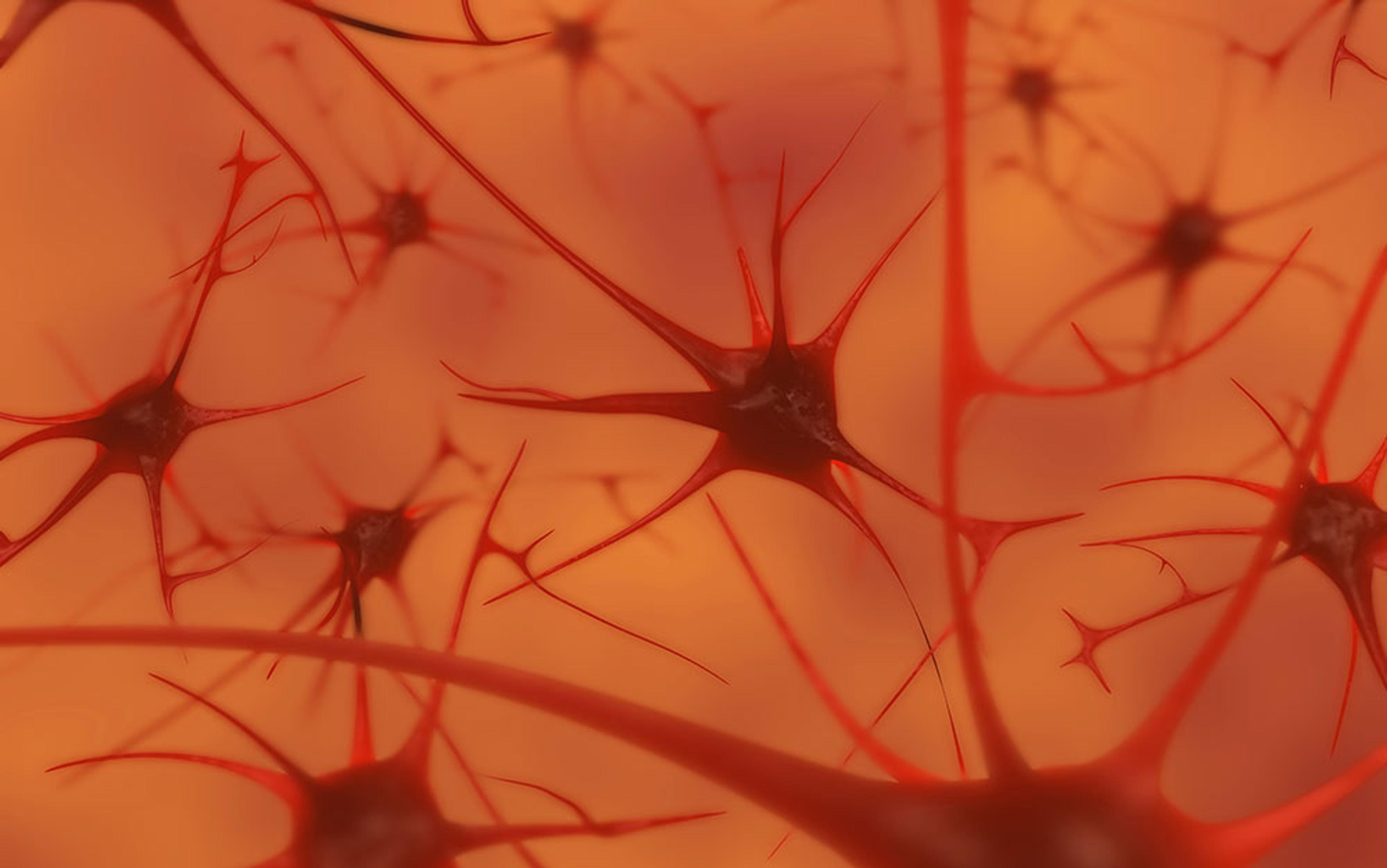If you could ask Dante where he got the idea of life as a road, or Rilke where he found the notion that time is a destroyer, they might have said the metaphors were hewn from their minds, or drawn from a stock of poetic imagery. Their readers might have said the imagery had origins more divine, perhaps even diabolical. But neither poets nor readers would have said the metaphors were designed. That is, the metaphors didn’t target people’s cognitive processes. They weren’t engineered to affect us in a specific way.
Can metaphors be designed? I’m here to tell you that they can, and are. For five years I worked full-time as a metaphor designer at the FrameWorks Institute, a think tank in Washington, DC, whose clients are typically large US foundations (never political campaigns or governments). I continue to shape and test metaphors for private-sector clients and others. In both cases, these metaphors are meant to help people to understand the unfamiliar. They aren’t supposed to make someone remark: ‘That’s beautiful.’ They’re meant to make someone realise that they’ve only been looking at one side of a thing.
Here’s an example. In the 1960s, the US philosopher Donald Schön spent some time at the consulting firm Arthur D Little (he eventually became a professor at the Massachusetts Institute of Technology nearby). He was working with product researchers trying to figure out why a new paintbrush design with synthetic bristles didn’t apply paint smoothly. As Schön related it later, someone in the group suddenly said: ‘A paintbrush is a kind of pump!’
Ordinarily, seeing a paintbrush this way would be considered a mistake. In this case, what the researchers knew about pumps suddenly became available for thinking about paintbrushes too. ‘Paintbrush as pump’ isn’t beautiful, but it’s very useful. It was, as Schön wrote later, ‘a generative metaphor for the researchers in the sense that it generated new perceptions, explanations, and inventions’. (Among other things, it led to new bristle designs that would bend the right way.)
Metaphor designers create these pseudo-mistakes deliberately. Sometimes the metaphors end up in op-eds or public-service announcements. Sometimes they’re useful for helping people conceive of solutions to problems, or for internal communications in organisations. The challenge for the designer is to generate lots of pseudo-mistakes, some of which can be used for thinking and that have the power to stick around. For someone like me who is reflexively metaphorical (my wedding invite was built around the idea of a labyrinth), these are satisfying tasks, and, as a writer, I have no problem leaving material on the cutting room floor. But it’s when we start testing our metaphors for their social and cognitive usability that design can become really powerful.
Consider the thing to be communicated – a business strategy, a discovery, a new look at a familiar social problem – and then make a pseudo-mistake. Actually, create a lot of pseudo-mistakes, and test each one. At the end, the floor will be covered with the blood of failed comparisons. One way to create these mistakes is to deliberately miscategorise the thing you are trying to explain. What do paintbrushes have to do with pumps? Ah, they all move liquid. You choose the pump because it’s the most prototypical member of the things-that-move-liquid category.
Another way to create the mistake is to break the thing you want to explain into its components, then connect them to some other idea or domain of life. Say there’s a city department that’s in charge of lots of different programmes, all of them related to health. The department plays a centralising function for various programmes funded by multiple sources, operating over several jurisdictions. That diversity confuses audiences. Also, the programmes are often for vulnerable populations – the elderly, immigrants, people with addictions: people for whom the average taxpayer’s sympathies are not necessarily assured. So the right metaphor must speak to inclusion and community, and suggest some benefit, such as health or opportunity, that’s more widely shared. I tried ‘bridge’ and ‘platform’, but ultimately went with ‘key ring’: the department holds the keys for unlocking health.
at a conceptual level, life is a journey, and arguments are wars: you take sides, there can be only one winner, evidence is a weapon
Pretty much every metaphor designer is inspired by Metaphors We Live By (1980), by the Berkeley linguist George Lakoff and the philosopher Mark Johnson at the University of Oregon. It’s the classic look at how metaphors structure the way we think and talk, and once you’ve read it, you can’t help but agree that, at a conceptual level, life is a journey, and arguments are wars (you take sides, there can be only one winner, evidence is a weapon). However, for the practical metaphor designer, psycholinguistic research turns out to be much more useful than philosophical commentary, because it studies how people actually encounter and process new metaphors.
It was the Princeton psycholinguist Sam Glucksberg who in 2003 argued that metaphors are really categorisation proposals. Provocations, you might call them. You’re suggesting that one thing belongs with another. But the thing that lets us make sense of ‘paintbrush as pump’ – or ‘lawyer as shark’ – is that ‘pump’ is the name of a category for liquid-moving mechanisms, just as ‘shark’ is the name of the category for predatory individuals. Words such as ‘pump’ and ‘shark’ aren’t just the names of individual things; they also speak to generalities. They have what Glucksberg calls ‘dual reference’. He points out others that have become conventionalised metaphors. ‘Butcher’ refers to ‘anyone who should be skilled but is incompetent’, ‘jail’ to ‘any unpleasant, confining situation’, ‘Enron’ to ‘any dramatic accounting scandal’, and ‘Vietnam’ to any ‘disastrous military intervention’.
An alternative theory comes from the psycholinguist Dedre Gentner at Northwestern University in Illinois, who describes metaphor as a ‘mapping’ between two concepts. On this view, understanding comes about in two steps. In the first, the most obvious shared structural properties between the concepts are matched. In Schön’s paintbrush metaphor, what’s matched up is that pumps move liquids and so do paintbrushes. In the second step, other comparisons are made. That’s when the researchers wondered if the empty spaces between the brush’s bristles might be as crucial to paint delivery as the vacuum of a pump is to water movement. (They are.)
These two competing theories pose a question: do people interpret new metaphors more easily when the comparison between two domains is apt – that is, when the two elements seem to fit with each other? ‘Love is a tree’ might be an example of an apt metaphor, whereas ‘a child is a machine’ seems less so. Why is that? Perhaps it’s because, at a conceptual level, love is easily seen as something organic and sheltering, whereas putting machines and children together in one image triggers conceptual dissonance. (I’ve certainly found that people don’t like that pairing.) Or do we grasp metaphors more readily when at least one of the concepts is very familiar? This question suggests a further one: to what degree is the aptness that you perceive in the metaphor just a measure of how long it’s been around?
In 2005, Gentner and the psychologist Brian Bowdle at Grand Valley State University in Michigan proposed the ‘career of metaphor’ hypothesis. On this theory, people understand new metaphors more easily if they are presented as mere comparisons. Let’s use one I recommended recently – that, for monolingual English-speakers, English is a bottleneck. If Gentner and Bowdle are right, ‘English is like a bottleneck’ should be easier to digest on first hearing than ‘English is a bottleneck.’ Over time, though, we get more comfortable with the metaphor as a categorisation and the non-comparative version becomes easier to grasp.
Among scholars of language in the brain, the battle over ‘metaphor as category’ versus ‘metaphor as mapping’ continues unresolved. They’re preoccupied with questions such as why metaphors aren’t reversible (why it makes no sense to say ‘my jail is a job’ or ‘a pump is a kind of paintbrush’) or how different types of metaphor balance meaning differently. These are interesting debates. Yet they are largely inconsequential to the metaphor designer. The truth is, both categorisation and mapping are sources of metaphorical invention. At this practical level, that’s all that matters.
What, then, are the tools of the trade? The designer checks out the list of conceptual metaphors that Lakoff assembled, such as ‘time is motion’, ‘states are locations’, ‘purposes are destinations’, ‘causes are physical forces’. She also collects the dual-reference terms that appear in conventional metaphors (sharks, Vietnams, jails, buildings) in order to repurpose them for new ones. You want these terms because they’re conventional and recognisable. Pipeline. Mountain. Sale.
At the same time, designers look for common conceptual domains in which analogical mappings are easy to find. There’s no dictionary of these; you have to build them yourself. At FrameWorks, we often developed metaphors to make ‘system-ness’ more apparent: cognitive systems, educational systems, abstract causal systems and so on. I made a list of systems: buildings, machines, orbits, soils, tides, evolution, gravity. I’ve developed many metaphors for structures, so I have structure lists: the human body, containers, surfaces, furniture. You have to build lists to browse through because it’s easy to get stuck in ruts. In brainstorm sessions, a former colleague would always suggest sports metaphors. Another guy always had a vehicle metaphor: driving, transmission, engine. So many of them centered on repair, I told him to buy a new car already.
To design metaphors, it helps to have a metaphor for metaphor. I think of it as a room: the windows and doors frame a view toward the reality outside. Put the windows high, people see only the trees. Put them low, they see the grass. Put the window on the south side, they’ll see the sun.
Sometimes the room can be empty. Sometimes the views from the room are a bit forced. Or perhaps they’re new and therefore uncomfortable. In those situations, you have to direct people’s attention. You have to give them furniture to sit on that makes your architectural choices unavoidable.
If you say that the brain is a machine, that’s a metaphor that needs no furniture. As soon as they hear it, people will understand that the brain can break, and that it can be fixed. In other cases, the implications need to be spelled out. Understanding how computer protocols for the internet are forms of hospitality requires at least an abbreviated explanation of those protocols. Once you understand the basic premise, the logical consequences of the metaphor tumble out: hackers, spoofs, viruses and the like are exploiting the hospitality features of our machines. We welcome them into our homes under false pretenses.
When the designer has to spell something out, that’s the furniture in the room. He’s forcing people to look out of the windows in the way he’s prescribing. According to Gentner and Bowdle’s career-of-metaphor hypothesis, when people walk into a new room, it needs to be full of furniture. Eventually, though, the furniture can be taken out. Maybe the best metaphor needs no furniture.
But some metaphors will always need explicit matching. For example, people seem to have trouble grasping forms of causality that aren’t direct and linear. Our brains aren’t built for it, and our culture gives us crude models for understanding it. Similarly, if the metaphor is very new, you’ll need furniture. A metaphor for epigenetics always requires a lot of help, mainly because few people understand what genes are for yet.
What often happens when you introduce people to this new metaphor is that they’ll complain about the furniture colour or the window trim, or praise you for something minor, such as the window sashes. The danger is that they’ll discard the enterprise before they’ve looked out the window – which, in most cases, offers a view onto the outside that’s unfamiliar. It can make them squeamish, this new view. To design a metaphor, you have to get beyond what people say they like or don’t like. These are emotional responses, and it’s the cognitive ones you’re after.
there was a problem: people valued the orchid and looked down on the dandelion
That said, you do have to be careful with emotional responses. I worked on a project about childhood resilience. The question was how do children turn out well despite difficult circumstances? We had become acquainted with the metaphor of dandelions and orchids, which originated with the paediatrician Tom Boyce at Berkeley. He used it to describe two types of child, one who did well in a range of circumstances (the dandelion), and one who succeeded only under a narrow set of circumstances (the orchid). Journalists liked it – the US science writer David Dobbs was writing a book under this title. It was thought to be conventionally successful. But it had never been tested with users.
We found that people knew what orchids and dandelions were (not always something you can count on). Also, the comparison appeared to help them understand why certain children do well and others don’t. Yet there was a problem: people valued the orchid and looked down on the dandelion. The culture said they should value the rare, beautiful thing, not the sturdy weed. And so the average American saw no sense in making more dandelions. Besides, their child was not common but special and rare. When people won’t use a term to describe their own kids, that’s a giveaway that the metaphor won’t work. In the end, we developed the metaphor of a weighing scale to explain how positive influences can outweigh negative ones in a child’s early life, thereby making resilience not a trait of the individual person but a function of that person’s environment.
When I describe my work, people often ask whether these new metaphors actually change how people think. They can. When my colleagues and I tested a set of candidate metaphors on the streets, asking random strangers what skills are, the respondents mumbled in their usual ways. Then we gave them a metaphor in which skills are like ropes, woven out of many components braided together, and asked them more questions. It’s not that they became silver-tongued, exactly, but the fumbling abated. They began to talk about the parts of skills, how they have to be combined, and so on. It’s as if this new idea, which we gave to them, had taken them by the hand. Now they were walking down the street together, and the metaphor was showing them things. That’s how we knew that what we were doing with metaphors was working.
The metaphor designer must also have an idea of what makes a good one. The psychologist Walter Kintsch at the University of Colorado at Boulder wrote of ‘strong’ metaphors that draw their source from ‘a concrete term, rich in imagery and potential associations.’ Additionally, this domain is unrelated to the thing you’re trying to explain: it’s ‘something unusual’, wrote Kintsch, ‘a pleasant surprise. But it cannot be too much of a surprise.’
I like Kintsch’s notion of good metaphor as a surprise. But it also has to be able to survive, avoiding traps in the culture that can disable it. Once we loose a metaphor into the world, it will be blocked by other ways of thinking that change its meaning or disrupt its interpretation. You saw what happened with the orchid and the dandelion – cultural ideas about a hierarchy of flowers intervened and hijacked the metaphor’s power. That’s no good.
Another one that suffers a similar fate is the metaphor that the neuroscientist Dan Siegel at the University of California, Los Angeles, developed to talk about executive function and the limbic system: ‘upstairs brain’ and ‘downstairs brain’. Since my son was a toddler, I’ve appealed to him to use his ‘upstairs brain’, where he regulates behaviour, switches rules and manages social interactions. I became less enamoured with the metaphor once I realised that it explicitly deprivileges his love, excitement, curiosity and other emotions because they are ‘down’.
My metaphors close the gap in people’s ability to grasp something, or speed up what they’re already on track to see
One thing you learn very quickly as a metaphor designer is that your language and your culture’s resources aren’t infinite. Nor are they as versatile as you might hope. The richness of the semantic resources that a designer can muster always encounter friction from the human brain’s built-in biases and preferences, as well as cultural defaults that block certain kinds of understandings.
So, how much power does a metaphor designer really have? That’s a question I’m not sure I can answer. In my own work, I strive only to create images that seem likely to benefit society. I’ve mainly developed metaphors for social organisations, trying to communicate the expert view of an issue, and I’m happy about the work I’ve done. But more than that, I see my job as being able to assist understanding. My metaphors close the gap in people’s ability to grasp something, or speed up what they’re already on track to see. I’m not creating fantastical scenes of my own invention or distracting people from what they should be looking at. The windows and doors of the metaphor room are supposed to provide another way of looking at reality.
And yet, it’s not hard to think of metaphors that over-simplify an aspect of the world, or that obscure reality. Is a bank really a container that we put our money in? Is a child a flower? These are conventional metaphors, but if you soup them up, you can make them into something dangerous. They take something that’s already strongly expressed in the culture, something that reinforces the existing framing of an issue, and makes it even more cognitively usable. Is running a national economy really like balancing a household budget? In the US, people believe that the family is the most salient social unit, which makes the ‘national budget is a household budget’ exceedingly sticky and powerful. That’s why politicians of a reactionary stripe find it useful to keep these misunderstandings around.
Designing metaphors makes you look around and realise how much of the language we use has been engineered to create its effects, in the same way that the resistance of an Oreo cookie’s cream against the tongue is no accident. To the metaphor designer, a really good, wild metaphor is a special find. I noticed one the other day. Someone was likening the deleterious health effects of sugar to the browning of a banana. When you eat a lot of sugar, they said, your body is browning from the inside.
I’m not certain that this idea will get any traction in the culture, but I haven’t forgotten about it.






